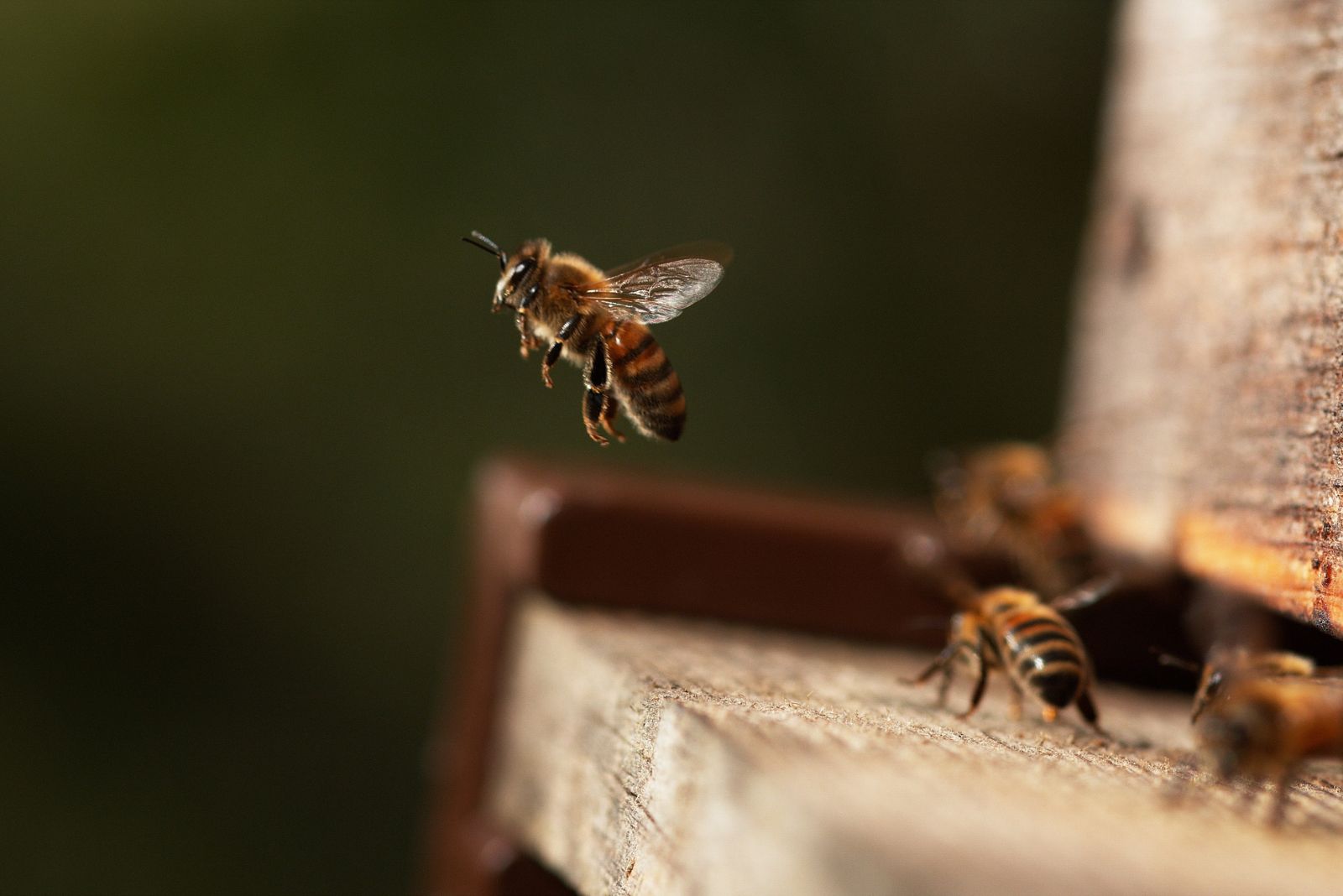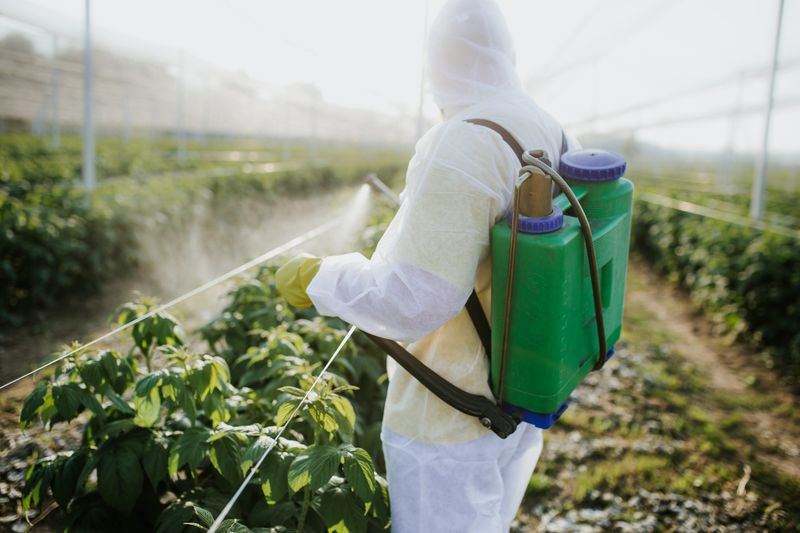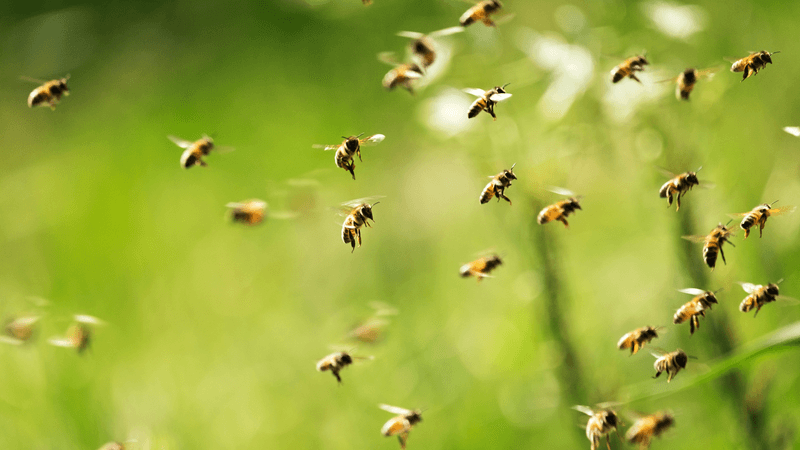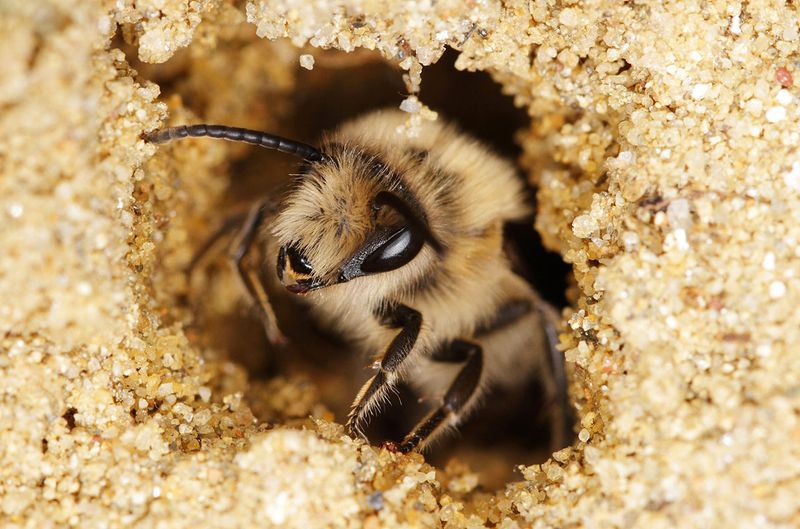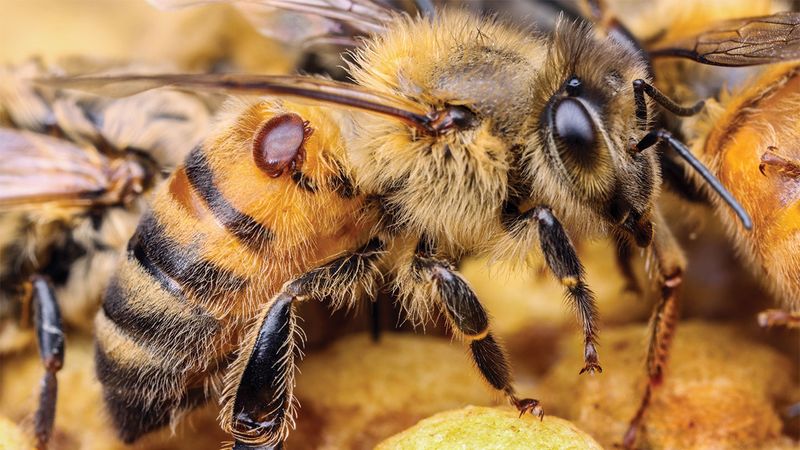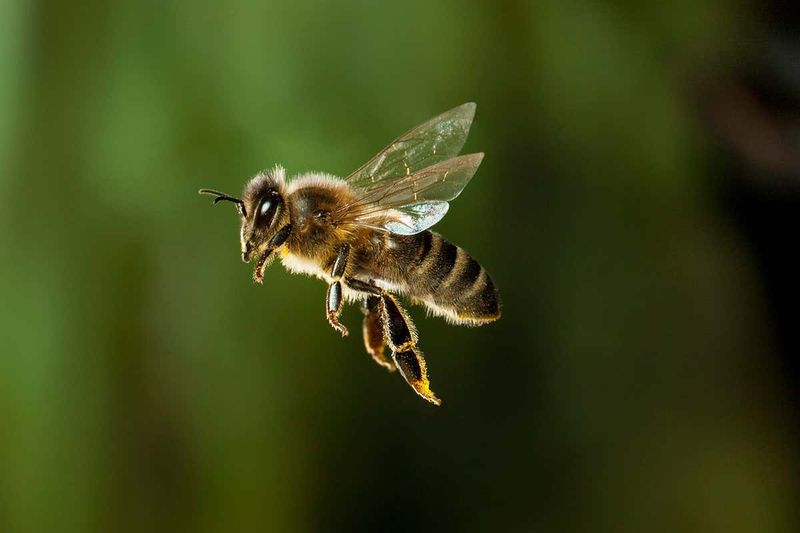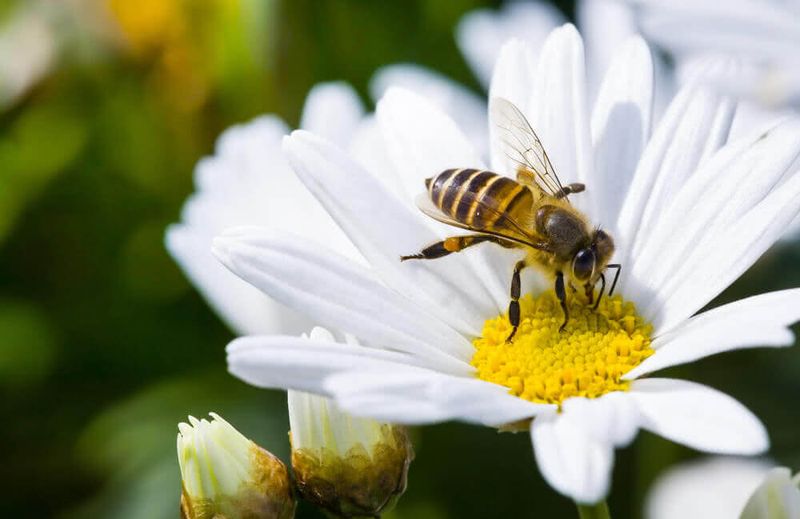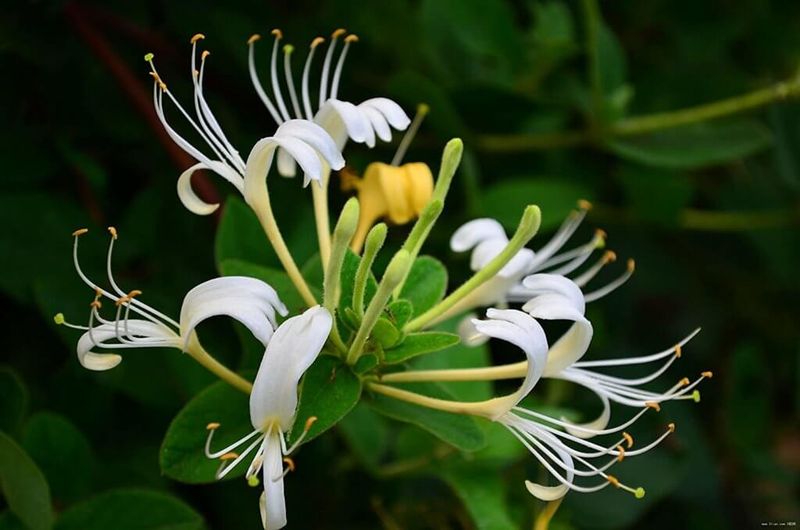Bees used to drift through Kansas gardens like tiny workers on a steady schedule, but in many towns their familiar buzz has grown faint. Some homeowners first notice it when flowers stay untouched or fruit trees set fewer blooms.
The change may seem sudden, yet it comes from pressures that build quietly in fields, yards, and open spaces across the state. From shifting weather to shrinking habitat, each factor chips away at the routines bees depend on. Understanding what pushes them out sheds light on a problem that reaches far beyond a single garden bed.
1. Pesticide Use On Farms
Modern farming depends heavily on chemicals to protect crops from harmful insects. Unfortunately, many pesticides don’t just destroy pests. They harm beneficial insects like bees too. Neonicotinoids, a common type of pesticide, can damage bee nervous systems and memory.
When bees visit treated plants, they carry toxic chemicals back to their hives. Even small amounts can weaken entire colonies over time. Farmers are now exploring safer alternatives to protect both crops and pollinators.
2. Loss Of Natural Habitat
Wild bees need diverse flowering plants and undisturbed nesting sites to thrive. As Kansas converts prairies and grasslands into farmland and housing developments, bees lose their homes. Native wildflowers that once covered the landscape are becoming increasingly rare.
Without access to varied food sources throughout the seasons, bee colonies struggle to stay healthy. Many species nest in the ground or hollow stems, which get destroyed during construction. Preserving natural areas helps bees find the resources they desperately need.
3. Climate Change Effects
Shifting weather patterns are throwing off the delicate timing between bees and flowers. Warmer springs might cause plants to bloom before bees emerge from hibernation, leaving both without their partners. Extreme temperatures and unpredictable rainfall also stress bee colonies.
Droughts reduce the number of flowering plants available for food. Meanwhile, severe storms can destroy hives and disrupt foraging patterns. As Kansas experiences more weather extremes, bees face increasing challenges to their survival.
4. Varroa Mite Infestations
Imagine tiny vampires attacking a beehive, that’s essentially what varroa mites do. These parasites attach themselves to bees and suck their blood, weakening them significantly. A single mite might not seem dangerous, but thousands can devastate an entire colony within months.
Mites also spread viruses between bees, making infections worse. Beekeepers constantly battle these pests using various treatment methods. Without proper management, varroa mites can wipe out hives completely during winter.
5. Monoculture Farming Practices
Kansas produces enormous amounts of wheat, corn, and soybeans, but these crops create nutritional deserts for bees. When vast fields contain only one plant type, bees can’t find the diverse pollen and nectar they need for balanced diets. It’s like eating only bread for every meal.
Monoculture farming also means flowers bloom all at once, then disappear completely. Bees face feast-or-famine conditions that weaken their immune systems. Adding flowering strips between fields could provide much-needed variety.
6. Disease And Viruses
Bee colonies face numerous illnesses that spread quickly in crowded hives. Deformed wing virus, for example, causes bees to develop crumpled wings that prevent flying. American foulbrood is a bacterial disease that destroys developing bee larvae before they mature.
Nosema is a fungal infection affecting bee digestive systems, weakening their ability to process food. When colonies are already stressed from other factors, diseases become even more serious. Healthy, well-fed bees have stronger immune systems to fight infections.
7. Lack Of Flowering Plants
Modern landscaping often favors neat lawns and ornamental plants that produce little pollen or nectar. Bees flying through Kansas neighborhoods find few food sources compared to wild areas. Many popular garden flowers have been bred for appearance rather than nutritional value for pollinators.
Roadside maintenance that removes wildflowers eliminates important feeding spots. Even small gardens with native plants can make a real difference. Planting bee-friendly flowers provides crucial resources throughout spring, summer, and fall.
8. Harsh Winter Conditions
Kansas winters can be brutally cold, and bee colonies must work hard to survive until spring. Bees cluster together inside their hives, vibrating their muscles to generate heat. If food stores run low or the colony is too small, they won’t make it through.
Extreme cold snaps and late freezes are particularly dangerous. Colonies weakened by other stressors throughout the year are most vulnerable. Beekeepers often provide extra insulation and emergency food supplies during harsh weather periods.
9. Invasive Species Competition
Non-native plants and insects are changing Kansas ecosystems in ways that hurt native bees. Invasive plants like honeysuckle and autumn olive crowd out native wildflowers that bees depend on. Some invasive species bloom earlier or later, disrupting natural pollination cycles.
Introduced bee species sometimes compete with native bees for limited resources. Asian hornets, though not yet widespread in Kansas, pose a serious threat where they appear. Protecting native plant communities helps ensure local bee populations have what they need.

